We first found Linda Miller Nicholson through her site, Salty in Seattle. She inspired us with positivity, pasta and smile. Linda’s a wonderful woman, chef, and overall creative talent. She made a name for her brilliant exploration of pasta in everything from flavors and textures to colors and presentation.
In July of 2016, Linda agreed to do an interview with Stir the Pots. Since then, the Seattle-based food creator has written several books, produced events, and overall just brought joy to the world. To say she’s “colorful” is an understatement. It was a genuine honor to have had her spend time in our kitchen. Just check out her Instagram feed here.
We were sad to learn that her father recently passed away. As half of the couple who brought Linda into the world, we wanted to celebrate her and him by republishing this article from eight years ago. Below you will find the transcript of our questions and her answers.
Why Salty Seattle?
Several years ago, I operated a blog and called it Salty Seattle because I’m salt-obsessed, sure, but also a little bit cheeky and eccentric, as the other meaning of salty implies. Once the full-scale social media barrage came along, I quit maintaining a blog, but kept the moniker because it continues to describe me both geographically and ideologically, and also because it’s a quick and easy identifier to keep consistent across social media channels.
Where did you learn to cook?
When I was young, my parents moved me from urban and culturally dense Southern California to the middle of nowhere Idaho. My only friend that first summer was a cow who I bottle-fed named Slobber. At the end of the summer, I returned to California for a couple of weeks to visit friends and family, and when I got back to Idaho, my dad informed me that we were having hamburgers for dinner. I was excited. He asked if I knew where he got the beef. I assumed the store, and was appalled to discover that he had murdered my Slobber, my sweet friend, completely unbeknownst to me while I was away. I didn’t even get to say goodbye. At that moment I announced I was vegetarian, and my meat-and-potatoes can’t cook their way out of a paper bag parents laughed in my face. They told me I would starve because no one would cook for me.
There is nothing I like more than a challenge. I taught myself to cook that fall through a series of (small) successes and (large) failures. I once tried to make pancakes in a glass dish right over the stove-top burner. When the glass exploded, I buried the evidence in the backyard before my parents got home. I mean, you can only go uphill from there, right?
When I added meat back into my repertoire 20 years later, I loved it, but I never use it as a crutch. I use it more for an accent to complement various pasta and vegetable dishes that are the ultimate comfort to me. There was no fancy internet in those days, so I got by with cookbooks rented from the library. The vegetarian epicure was a personal favorite. When I would visit my German grandparents in California, we would spend the day making egg noodles that we hand-rolled and lay over the backs of chairs to get them to stretch further. I now have some tricks up my sleeve that I wish I could share with my grandparents (RIP), but I’m so grateful to them for the noodle fundamentals, as pasta is where my heart now lies.
How do you describe your food, modernist, classic, Italian?
I am really rooted in classic techniques and flavor combinations, and I build flavor and sauces using mainly French and Italian techniques, however I have a global approach to combining ingredients and a local appreciation for what is seasonal and fresh. I have no problem with hyper-modern culinary techniques, however I think many of them are cost-prohibitive to employ in a home kitchen, with the notable exception of owning an immersion circulator for sous vide cooking.
Why do you love pasta?
I love pasta because it’s such an under-explored medium in terms of art, and it has the added bonus of being delicious. I love color, flavor, and texture, and with pasta-making, I get to play with the interface of those three elements every day. There is such a huge world of pasta out there- every culture has some form of milled grain mixed with liquid to form a “paste” that gets cooked. I am on a quest to discover as many of those variations as I can, and hopefully to add my unique creations to the pasta vernacular.
Lately your making food in really incredible ways, colorfully intense and decorative, what are you striving to please, taste, look?
Lately I have been focusing on a lot of colorful pasta. It started a few years ago when my picky child started rejecting more and more vegetables. I decided to start hiding them within the actual dough of the pasta rather than in the sauce, thinking he wouldn’t be able to pick them out that way. It worked- I can now honestly say that my child eats half a head of kale for dinner pretty often, although he doesn’t think of it that way. The colors have taken on a life of their own lately. I’ll add anything from blueberries to (edible) activated charcoal to pasta dough. It makes the artistic possibilities endless. I also don’t believe food should just be about food, so I try to make relevant cultural, social, and political statements with some of my pasta creations.
Traditional is great, but are you aloud to interpret or veer off course?
I think it is important to have a basis and knowledge of traditional culinary techniques, but progress would not be made if we did not build upon them. We have access to a global pantry in 2016, so it’s fun to be able to put things together that may not have traditionally been joined. I love to travel and get ideas from hole-in-the-wall restaurants in random countries, and then come home and put a personal twist on what I saw or ate.
What’s your favorite dish?
My favorite dish is simple and goes back to childhood, I’m sure I’m not alone in that. When I was a kid I would call it butter noodles. My grandmother and I would both order it at one of those fake-Italian small chain restaurants that has since closed, and then we would douse the noodles in red pepper flakes and that nasty stuff they would pass off as parm. Now that I can make it exactly as I want, I’d call it aglio, olio e pepperoncino. I still use a knob of butter but I temper it with fresh, green olive oil, and I use both sliced garlic that has been sautéed for 15 seconds in the butter (no longer than that, and sliced Goodfellas-style) as well as smoked garlic powder that I make myself. I use 100% yolk chitarra-cut noodles in place of boxed spaghetti, and I toss in some Calabrian chile oil as well as crushed red pepper for heat. I make it rain with really good parmigiano reggiano and then stir it all together for an upgraded taste of my youth.
Are you a cook, writer, model…what and who are you?
Hmm, too complicated to answer. I usually just tell people I do crazy shit with food.
What is molecular cooking really about, and will it last?
Modernist cooking is here for the long haul and there is definitely a time and a place for many of the techniques it has given us, but I acknowledge that it’s not for everyone and I certainly don’t use it every day. I think people want to be wowed, but they also want to find better ways of doing things, and modernist techniques can help us with both of those. 100 years from now, we will look at what we consider modern today as old hat, and of course some things will stay the course, and others we might find odd in the same way some people find things like aspic, blood sausage, or head cheese odd today.
What do you do when not cooking?
When I’m not cooking I teach cooking classes to kids and adults, do a fair amount of traveling, take care of my chickens, ducks, goats, dogs, kid, and husband, work on seemingly-endless construction projects around the house we built that never seems to quite be finished, snowboard, run, forage, garden, write, drink wine, and enjoy life J!
What’s your food philosophy?
My food philosophy is to strive for deliciousness above all, but presentation, creativity, and art can’t hurt to consider. We do, after all, eat first with our eyes. Any time I can tell a story, evoke emotion, or bring people together over food, I feel like I’ve accomplished my goal.
Hand shaped or extruded pasta, your favorite?
All pasta is good pasta and unless it’s overcooked, I haven’t met a pasta I don’t like. I’m lucky enough to have a decent pasta extruder to play with as well as good equipment for making hand-sheeted and formed pasta. I personally make way more sheeted-pasta because it’s more like a canvas upon which to create art. At least once a week I make pasta using nothing mechanized and only wooden or brass tools. This is usually gnocchi or cavatelli. I think making pasta is like learning to write. Nowadays you can probably go straight to an ipad and learn there, but you’ll miss the nuances if you don’t grasp the feel of a pen and paper first. The art and magic are in the pen and paper and once you get that down, you can transfer it to more modern media.
You were in Asia recently, Singapore, how did you feel about the trip?
I just got home from Singapore- what a cultural clusterf*ck! I believe it is too financially-driven from an industry perspective, not to mention too young (only 50!), to be a true food capital, but there is much to recommend it.
First off, great swaths of people from most every country live there, and they bring their food with them. We think we can find everything in the US. Well Singapore puts that to shame. While that is fantastic in itself, it also presents a problem because many of those esoteric items are not as fresh as they could be, and the widespread availability of “other” along with virtually nonexistent local agriculture leads to a real lack of any kind of terroir-based food culture. It reminds me a lot of Las Vegas, another city that attracts big-name chefs, but since nothing grows there, they somewhat-tiredly rely on their proven concept restaurants from elsewhere rather than attempting to integrate local concepts.
Don’t get me wrong, I had some great food in Singapore, most of which was from hawker stalls from various other parts of Asia. Most of the higher-end food I had, I would classify as “failed fusion.” Singapore is the definition of fusion, being so young and so global, but that’s a hard mark to hit without muddying the flavors of one aspect or another- like mixing paint- you have to be careful you don’t wind up with brown.
One notable exception was Wild Rocket. Their menu (currently) has French, Italian, Thai, Singaporean, modernist, Japanese, Chinese, Peranakan, Spanish (and more) nods, and all that is expertly woven together in a clean, vibrant, unpretentious way. For example, I learned about a rice noodle version of spaetzle that’s named for its resemblance to rodent droppings. It called “bee tai bak or low si fun.” The noodles were served with minced pork and the eponymous onsen egg, otherwise known as a 63-degree/sous vide egg. I’m eager to recreate those rice noodles & many other foods inspired by my trip.
Are restaurants still relevant?
I love dining out. Restaurants, pop-ups, supper clubs, greasy spoons, hawker centers, anywhere that serves food has relevance. I love to be able to get ideas when I go out and riff my own interpretations of restaurant dishes. Also, not everyone’s passion is cooking, and some people don’t have or make time for it.
Restaurants are an essential way of really getting your finger on the pulse of a city you’ve newly-visited. I think we are in the middle of a real restaurant renaissance. People are testing concepts like crazy and I applaud the variety. Owning a successful restaurant is another matter entirely, and it makes me sad when I see my restaurant chef friends having to make sacrifices they don’t want to make just to meet a bottom line.
What do you think about foodies and trends?
I think the fetishization of food in our country, at least, is double-edged. Anything that gets people talking about the future of food, great organic products, non-GMO produce, etc, helps further the conversation. I hate that access to quality organic food is not widespread across all income levels. Sometimes when something gets too cult, it also gets expensive and all of a sudden a society that has been relying on it as a mainstay of their diet for centuries gets priced out of their own diet (quinoa comes to mind).
Favorite ingredient?
My favorite ingredient is salt. I’m trying not to cop out here and just say one thing, but homegrown eggs and really good flour are also pretty damn important.
Book, will you write one?
There is a possibility I will figure out exactly what I want the Salty Seattle book to look like one day and I’ll actually get it down on paper. I’ve kept publishers and agents at bay for the time being until I really distill the idea down into something that I think might be useful and lovely for people to bring into their homes.
Is food television stupid?
Food TV- this is tricky because I’ve been a part of some food television shows and I am represented by a production company who may someday put together a project for me, but I don’t actually watch food TV, so I probably shouldn’t comment on it, too in-depth. I know that there are quality shows out there and I’d like to see more of them hit the mainstream. For now we can rely on people like Anthony Bourdain to keep on keepigng on.
Are people better cooks today, and why?
I think people have the potential to be better cooks today because there is a lot of access to quality information on cooking out there and it isn’t as hard to be self-taught. That being said, I’ve also seen recipes for whipped cream that involve nothing more than buying a can of ReddiWip. That makes me sad. Semi-homemade makes me sad. I’m not a big shortcut person. If you want to do something well, you have to put in the time and effort. That means time-management and mise en place are essential.
END OF INTERVIEW
Recipe: Pork Sugo
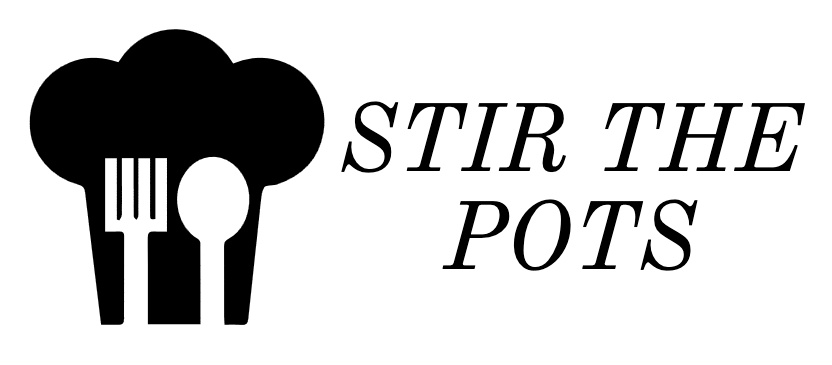
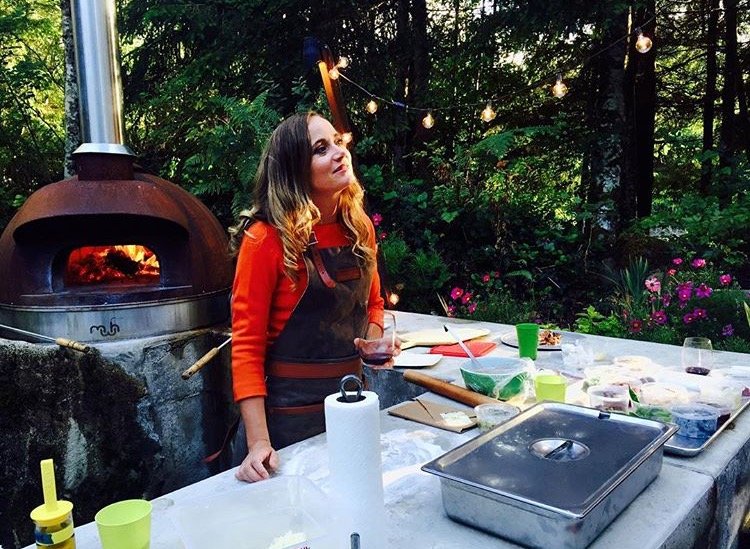
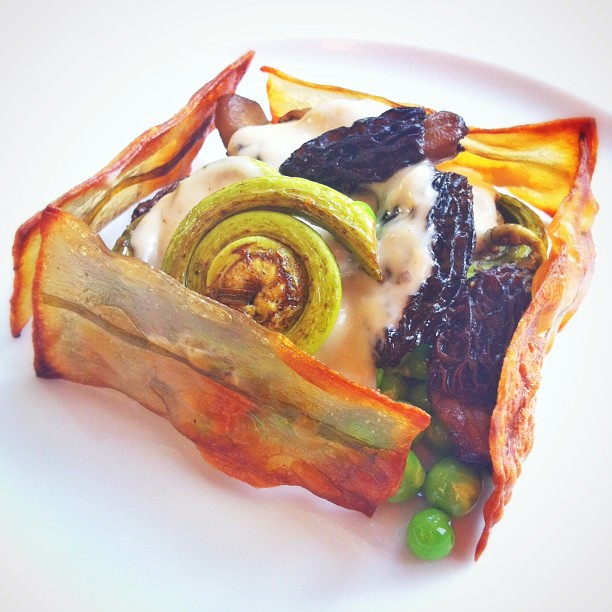
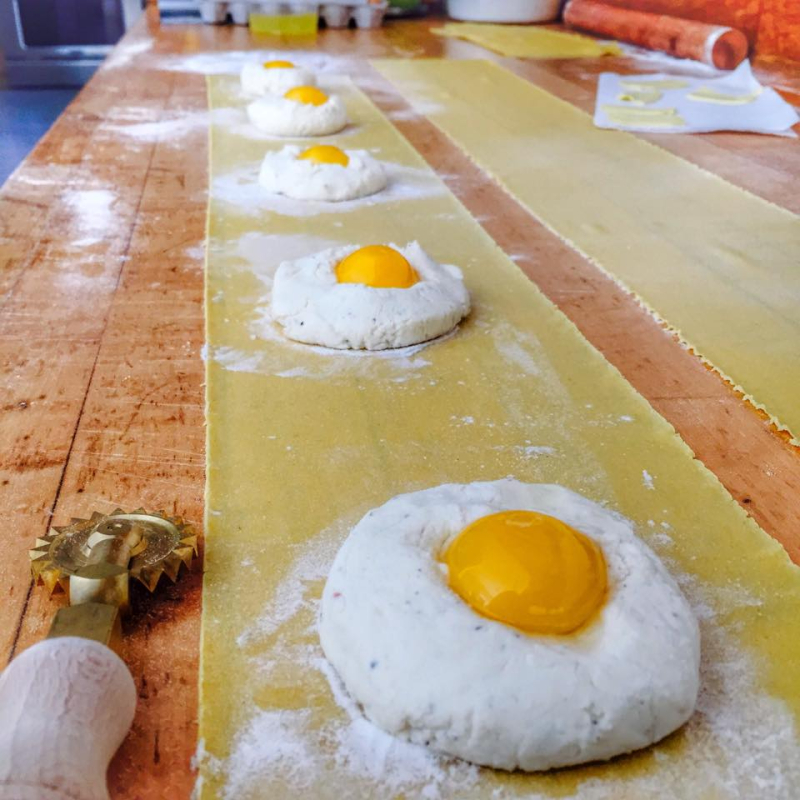

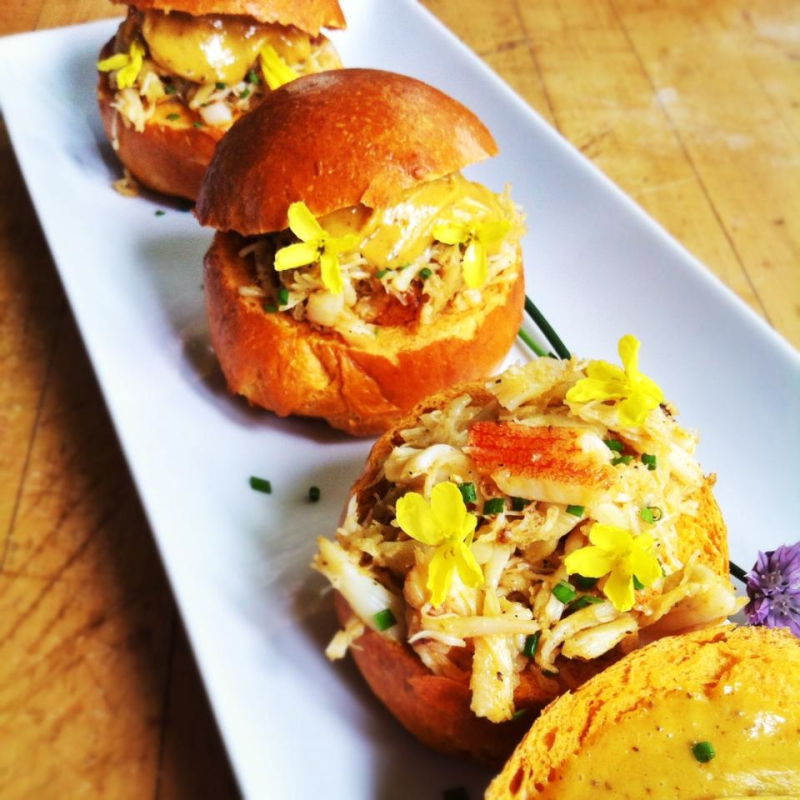
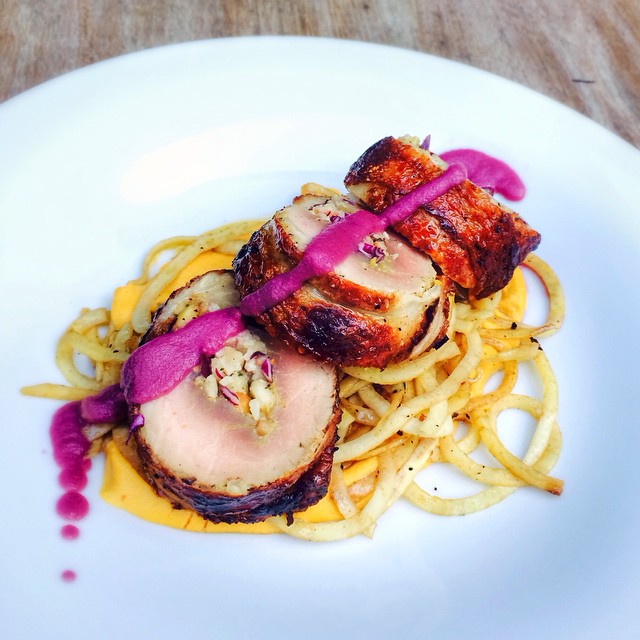



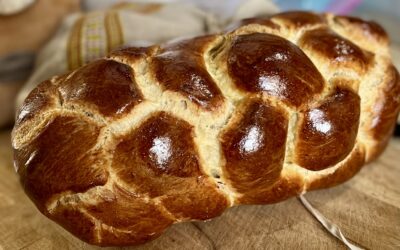

Great interview! And yes Linda, we pasta-challenged normal folk need your cookbook. Consider it a public service on your part. 😉
Salty, you’re an inspiration in more ways than you know. You are a magic maker.